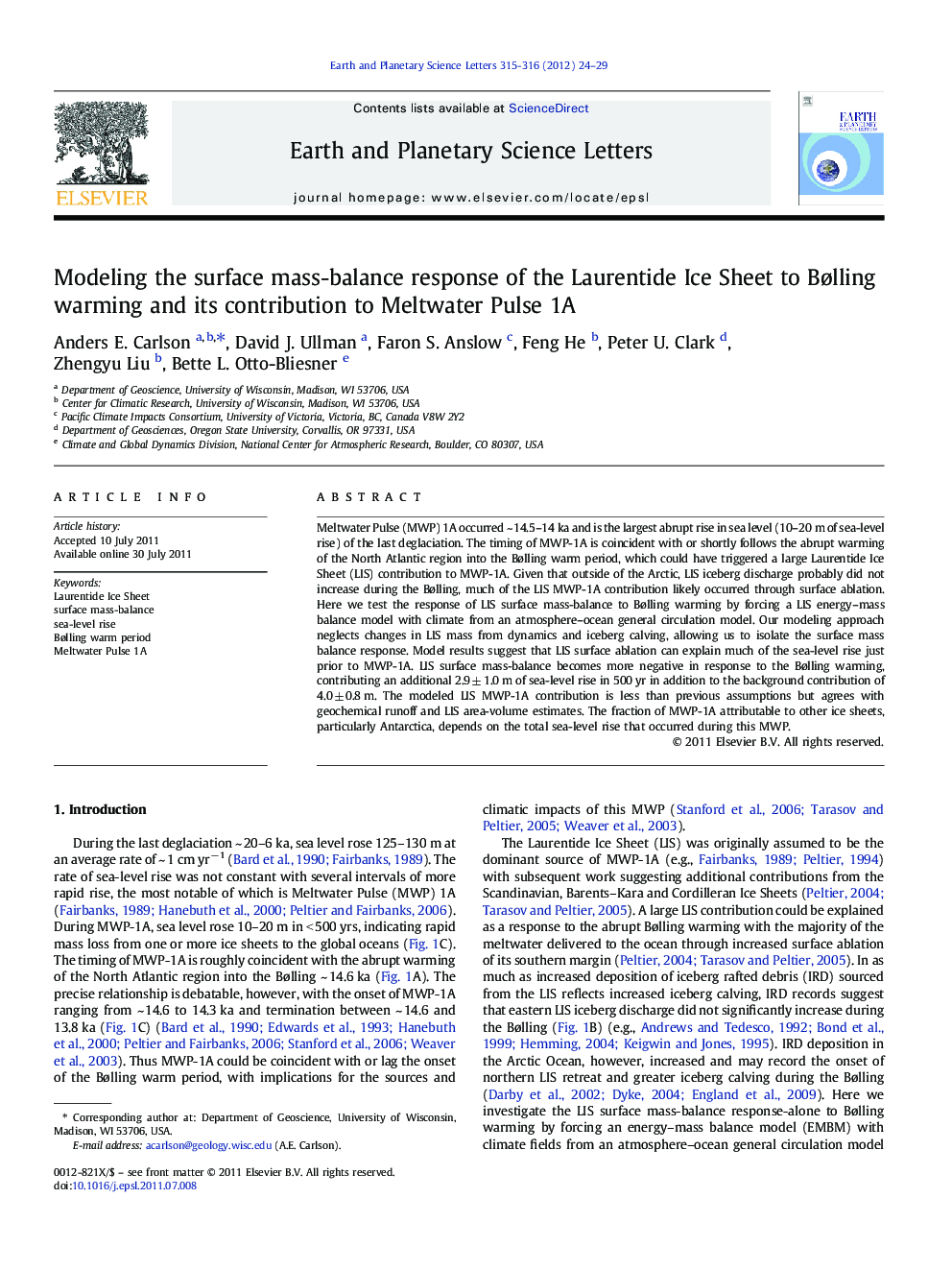| Article ID | Journal | Published Year | Pages | File Type |
|---|---|---|---|---|
| 4677606 | Earth and Planetary Science Letters | 2012 | 6 Pages |
Meltwater Pulse (MWP) 1A occurred ~ 14.5–14 ka and is the largest abrupt rise in sea level (10–20 m of sea-level rise) of the last deglaciation. The timing of MWP-1A is coincident with or shortly follows the abrupt warming of the North Atlantic region into the Bølling warm period, which could have triggered a large Laurentide Ice Sheet (LIS) contribution to MWP-1A. Given that outside of the Arctic, LIS iceberg discharge probably did not increase during the Bølling, much of the LIS MWP-1A contribution likely occurred through surface ablation. Here we test the response of LIS surface mass-balance to Bølling warming by forcing a LIS energy–mass balance model with climate from an atmosphere–ocean general circulation model. Our modeling approach neglects changes in LIS mass from dynamics and iceberg calving, allowing us to isolate the surface mass balance response. Model results suggest that LIS surface ablation can explain much of the sea-level rise just prior to MWP-1A. LIS surface mass-balance becomes more negative in response to the Bølling warming, contributing an additional 2.9 ± 1.0 m of sea-level rise in 500 yr in addition to the background contribution of 4.0 ± 0.8 m. The modeled LIS MWP-1A contribution is less than previous assumptions but agrees with geochemical runoff and LIS area-volume estimates. The fraction of MWP-1A attributable to other ice sheets, particularly Antarctica, depends on the total sea-level rise that occurred during this MWP.
► Bølling warming caused a decrease in the Laurentide Ice Sheet surface mass balance. ► The change Laurentide mass balance equals 2.9 ± 1.0 m of sea-level rise in 500 yrs. ► Surface melting of the Laurentide cannot explain Meltwater Pulse 1A.
